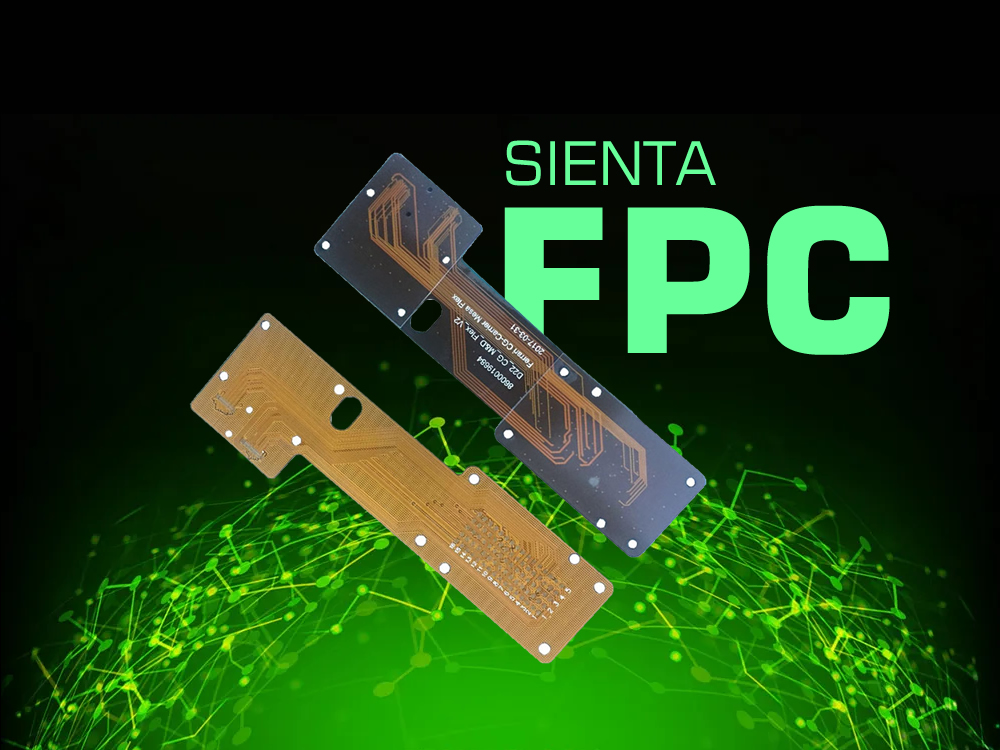The cost of an FPC is significantly influenced by its material composition. Materials typically account for
40% - 60% of the total cost. The selection of these materials is highly customizable, and each choice directly impacts performance, reliability, and final price.

Here are the six core material elements that determine the cost and quotation of an FPC:
1. Base Material (FCCL - Flexible Copper Clad Laminate)
This is the core substrate of the FPC, consisting of aPolyimide (PI) FilmandCopper Foil. It is categorized into two main types:
Types:
Adhesive-based FCCL: Uses an acrylic or epoxy adhesive layer to bond the PI and copper.Lower cost, but offers inferior thermal resistance, dimensional stability, and chemical resistance. Suitable for standard consumer electronics.
Adhesive-less FCCL: The copper foil is cast or sputtered directly onto the PI film. Offerssuperior performance(high-temperature resistance, excellent flexibility, thinner profile) but at asignificantly higher cost. Essential for high-frequency, high-reliability, or high-temperature applications (e.g., automotive, aerospace, advanced smartphones).
Selection Advice: Adhesive-less materials are the trend for high-performance applications, but cost-sensitive projects often still use adhesive-based laminates.
Key Parameters:
Copper Thickness:Common weights are 1/3 oz (12μm), 1/2 oz (18μm), and 1 oz (35μm). Thicker copper increases current capacity and cost.
PI Thickness: Common thicknesses are 1/2 mil (12.5μm), 1 mil (25μm), and 2 mil (50μm). Thicker PI provides better mechanical strength but reduces flexibility and increases cost.
Brand: Premium brands like DuPont, Taiflex, Shin-Etsu, and Ube offer proven reliability and consistency but are more expensive than domestic alternatives.
2. Coverlay
The coverlay acts as the protective "soldermask" layer for FPCs, insulating and protecting the exposed circuits. It is critical for flexibility and reliability.
Types:
PI Coverlay Film: The most common type. It's a composite of PI film and adhesive (epoxy or acrylic). It requires die-cutting to create openings and is then laminated onto the board. Offers thebest combination of flexibility and protection at a moderate cost.
Photoimageable Coverlay (PS Coverlay): A liquid or dry film applied like solder mask and then exposed and developed to create openings. Ideal forvery fine-pitch designs(e.g., BGA components) but ismore expensiveand typically less flexible than PI film.
Selection Advice: Use standard PI Coverlay unless the design has ultra-fine features that require the precision of a photoimageable process.
3. Adhesive
While the adhesive is part of the base material and coverlay, its properties (e.g., high-temperature epoxy) are a separate cost factor. High-performance adhesives command a higher price.
4. Stiffener
Stiffeners are laminated to specific areas of the FPC (e.g., under connectors or components) to provide mechanical support, rigidity, and sometimes heat dissipation.
Materials:
FR4 Stiffener: Themost common and cost-effectiveoption. Made from the same material as rigid PCBs.
PI Stiffener: Offers good flexibility and ismore expensive than FR4.
Stainless Steel (SUS) Stiffener: Provides the highest mechanical strength and is used for extreme support or EMI shielding.Highest cost.
Aluminum Stiffener: Primarily used as a heat spreader for thermal management. Cost is between FR4 and stainless steel.
Thickness & Application: Thicker stiffeners cost more. The application process (using pressure-sensitive adhesive or thermal-set films) and the complexity of the stiffener shape also affect the cost.
5. Copper Type and Plating
Copper Type:
Rolled Annealed (RA) Copper: Manufactured by rolling and annealing, resulting in a smooth surface and excellent ductility. It hassuperior flex enduranceand ismore expensive. Mandatory for dynamic flexing applications.
Electrodeposited (ED) Copper: Created by electroplating, resulting in a lower-cost foil with inferior flex endurance. Suitable for static or minimal flex applications.
Surface Finish (Plating): The chosen finish greatly impacts cost.
ENIG (Electroless Nickel Immersion Gold): Most common. Cost increases with the thickness of the gold layer (typical range: 0.05μm - 0.1μm or 2-4 microinches).
ENEPIG (Electroless Nickel Electroless Palladium Immersion Gold): Higher cost, used for advanced packaging and wire bonding.
Immersion Silver/Tin: Generally lower cost than gold finishes.
Hard Gold (Electrolytic Gold): Used on connector fingers for durability; significantly more expensive than ENIG.
6. Other Auxiliary Materials
EMI Shielding: Materials like silver epoxy, conductive foil, or magnetic shielding films add significant cost but are necessary for suppressing electromagnetic interference.
Bonding Sheets: Adhesive films used for multilayer lamination and stiffener attachment.
Release Films: Protective films used during manufacturing.
Summary and Quotation Guidance
To receive an accurate quotation from an FPC manufacturer, providing a detailedSpecification Sheetis crucial. Ensure you specify the following material parameters clearly:
|
Material Element
|
Key Parameters to Specify
|
Cost Impact
|
|
Base Material
|
Adhesive / Adhesive-less? PI Thickness? Copper Type (RA/ED) & Thickness? Brand Preference?
|
Adhesive-less > Adhesive; Thicker = More $; RA > ED; Imported > Domestic
|
|
Layer Count
|
Single-Sided, Double-Sided, or Multilayer (4L+)?
|
Higher layer count exponentially increases cost
|
|
Coverlay Type
|
PI Film / Photoimageable (PS)?
|
PS Coverlay > PI Coverlay
|
|
Stiffener
|
Material (FR4/PI/SUS)? Thickness? Application Area?
|
SUS > PI > FR4; Thicker = More $
|
|
Surface Finish
|
ENIG (Gold Thickness), Immersion Tin/Silver, etc.?
|
Hard Gold > ENIG > Immersion Tin/Silver
|
|
Special Requirements
|
EMI Shielding, Carbon Ink, Peelable Mask, etc.?
|
Any special requirement adds cost
|
|
Panel Utilization
|
Provide a panel drawing or finished dimensions
|
Higher utilization (less waste) lowers unit cost
|
In conclusion, FPC pricing is a complex calculation where materials form the foundation. Clearly defining your application's requirements (flex type, environment, performance) and budget allows manufacturers to propose the most cost-effective material stack-up for your project. 